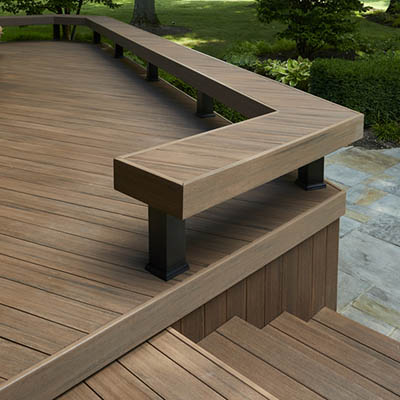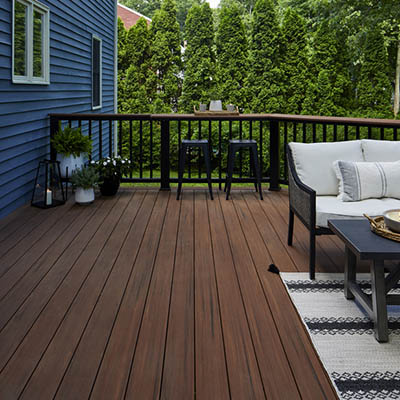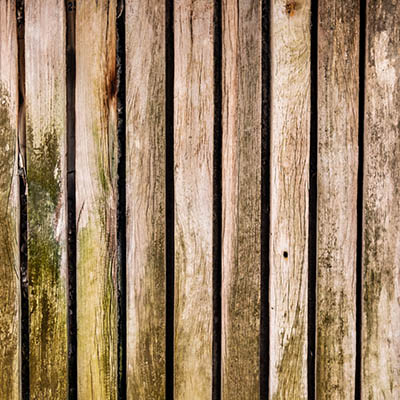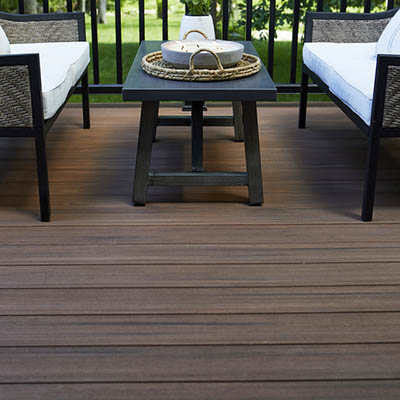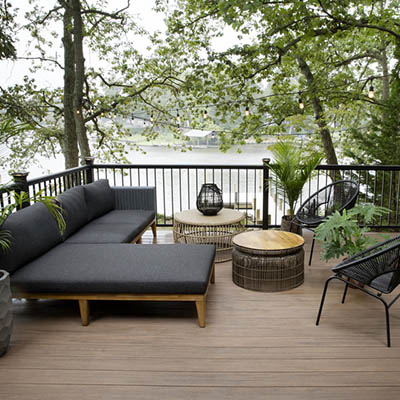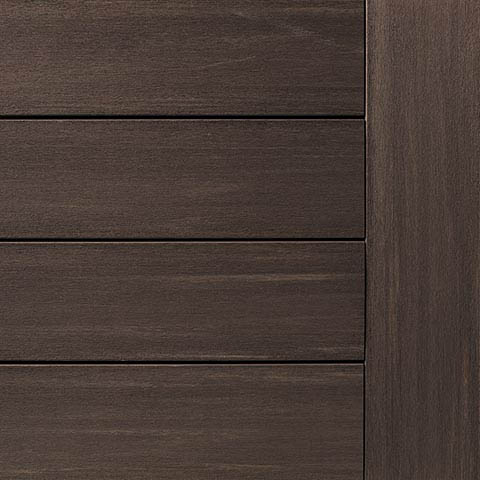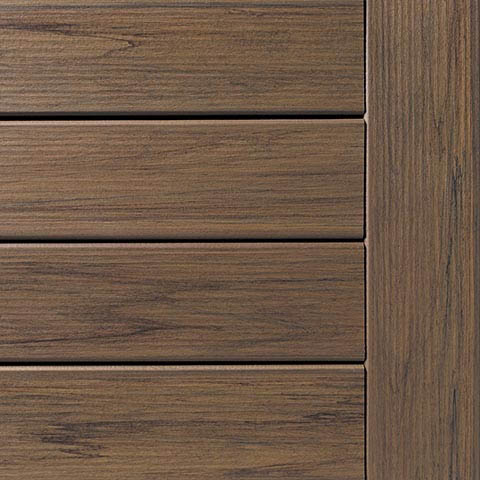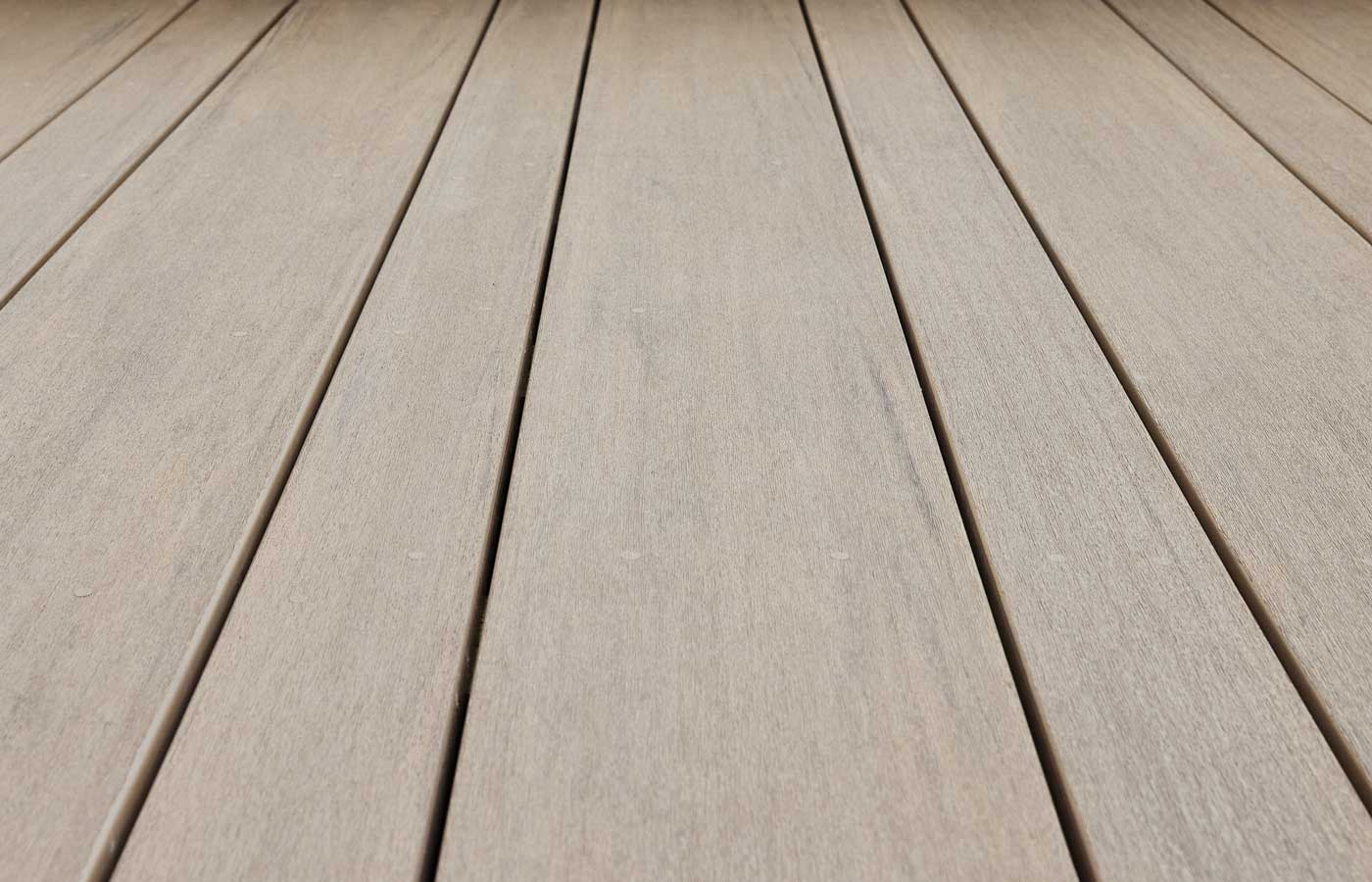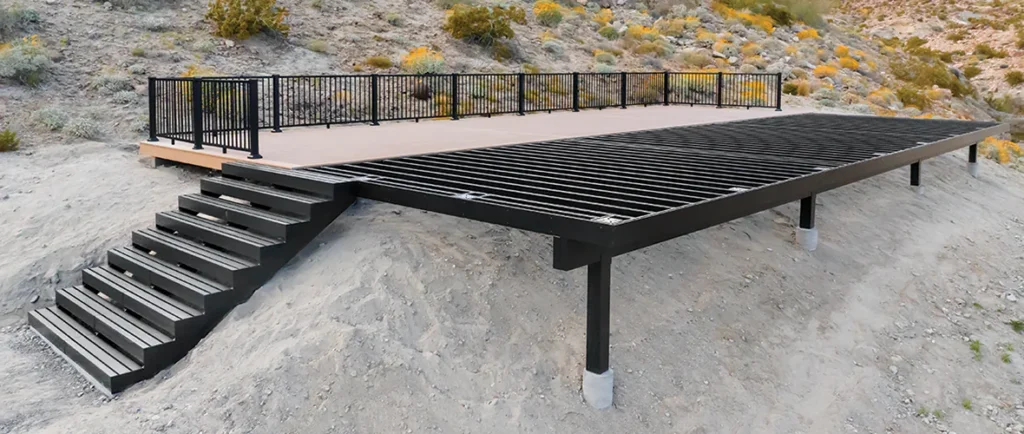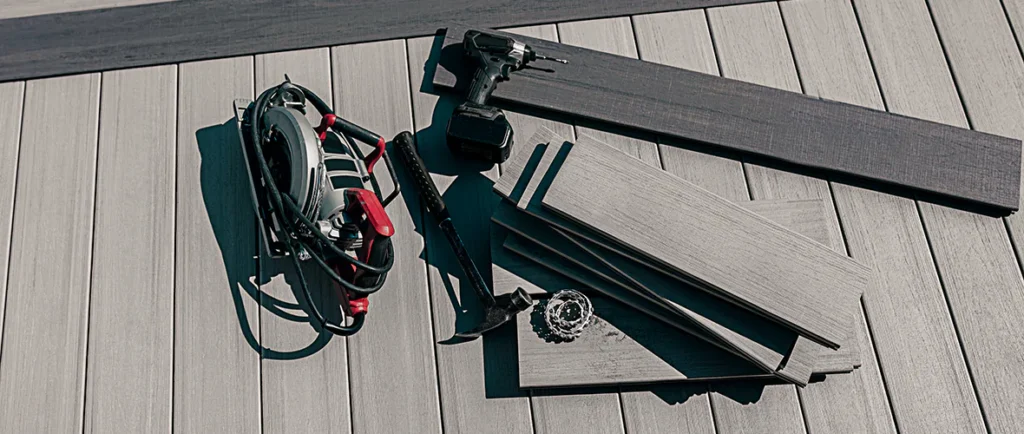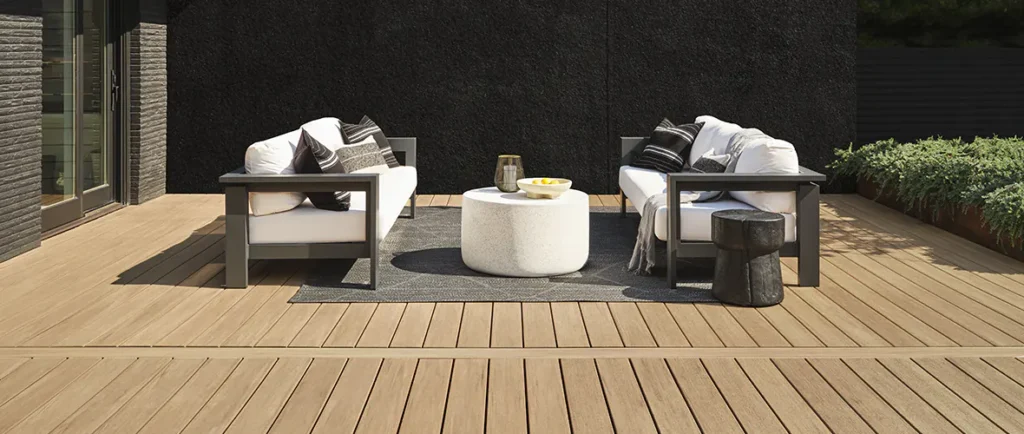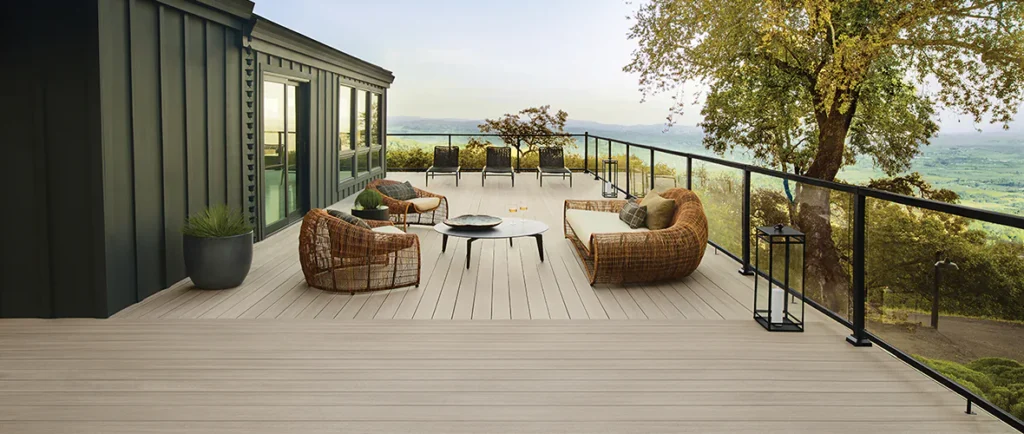Few things feel as rewarding as completing your outdoor living project and settling in to enjoy backyard meals, lounging with a good book, or sipping a lemonade with loved ones. However, if you’ve built with wood, you can quickly lose the beautiful aesthetics you desire and see your outdoor oasis change to a faded weekend project.
Deck damage includes weathering, warping, shearing, buckling, and rotting — and, if you build with traditional wood, it’s not a matter of “if” your deck will experience damage, but when.
What Contributes to Deck Damage & What to Look For
There is one main source of deck damage: moisture. Traditional wood, including pressure-treated lumber like pine, is porous. This means that no matter how many “protective” chemicals you use to treat your wood deck, moisture will get in eventually. Once moisture makes its way into your deck boards, it’s only a matter of time before you will need to replace them. Some of the indicators of wet boards include:
- Mold and mildew growth.
- Warping, buckling, and/or cupping.
- Uneven spacing between deck boards.
- A breakdown of structural integrity causing a springy or soft feeling underfoot.
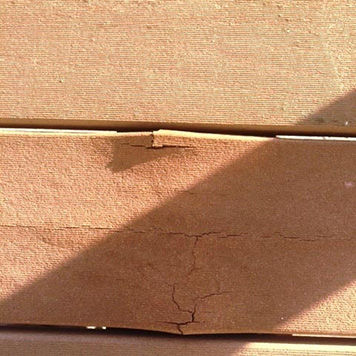
Cracking
Wood is a porous material, meaning that moisture can get into your wood deck boards easily. When exposed to direct sunlight, the water will evaporate and cause the board to crack.
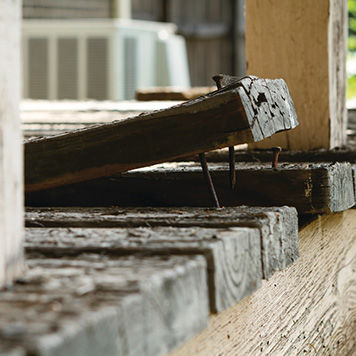
Warping
Moisture in wood deck boards can cause the boards to bow, cup, and otherwise warp. When this happens, the boards will have to be replaced, as warped boards cannot be salvaged.
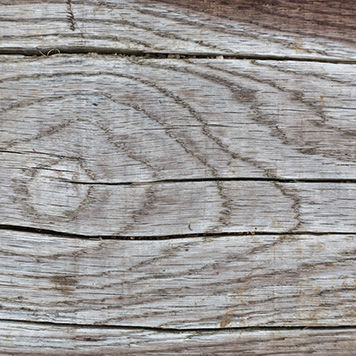
Fading
Every day your wood deck boards interact with powerful UV rays from the sun. The UV light can bleach the deck boards and weaken the bonds between the wood and the stain, accelerating fading as time goes on.
Traditional wood decks require consistent maintenance to ensure they stay safe and maintain their beauty. At TimberTech, we’re committed to preventing deck damage — and the costly expenses that come with it — through our premium-performance composite decking.
Common Types of Deck Damage
If you have a wooden substructure (as opposed to metal), once moisture invades your deck boards, there are three main areas where you’ll find deck damage: the surface boards, the substructure, and the ledger board. Once these areas begin to show wear due to moisture invasion, it’s time to take precautions to stop or mitigate the spread.
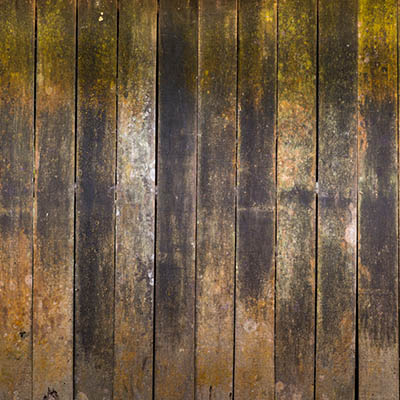
Surface-Level Signs
Inspect your deck boards for cracking, fading, or a noticeable softness when you walk over them.
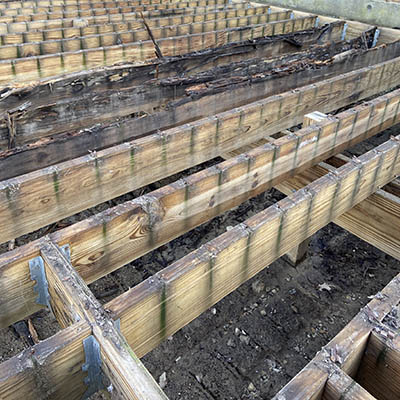
Wood Substructure-Level Signs
Look for rot where the beams and joists touch the substructure or around the deck posts.
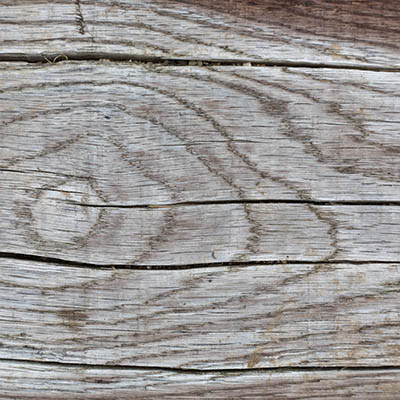
Ledger Board-Level Signs
Check for damage like discoloration, cracking, and/or rot on the board where your deck is attached to your home.
Inspecting your deck on a regular basis for different signs of deck damage will help you identify and repair areas that are affected by exposure to moisture. Catching these problem areas early will help prevent costly repairs later on.
When to Replace Your Deck
The answer to when it’s time to replace your deck depends on the type of deck materials you’ve built with. In general, wood deck boards will need to be replaced much more frequently than their composite counterparts. This is because most composite decking has protective capping that resists moisture invasion.
Pressure-treated wood decks only last 10 to 15 years – and need to be sanded and stained every two years or more depending on the desired aesthetics. If your wood deck is 15 years old or older, its natural aging process might have compromised its structure. The older your wood deck, the more frequently you should check for damage.
If your deck substructure is healthy, but your deck boards have seen better days, then we recommend a full deck resurfacing with composite decking. If your substructure is not healthy, then a full deck replacement — which includes a new substructure and surface boards — will be necessary.
What’s the Best Decking Material to Resist Deck Damage?
The short answer is: the deck boards with the least amount of organic material, so PVC decking. With a protective cap and no organic material, capped PVC boards are less likely to absorb moisture that will harm your deck. That said, multiple elements including cost, variety, and design will factor into determining which decking material is right for you.
Take a closer look at how each type of deck board holds up against the elements — and therefore, subsequent deck damage.
Wood Deck Boards vs Deck Damage
Traditional wood boards come in a variety of investment levels — from entry-level lumber to exotic hardwoods like Brazilian Ipe. However, they all have one thing in common: vulnerability. High-pressure treatments of “protective” chemicals eventually wear off, leaving residue in the soil and your deck boards exposed to moisture, wind, UV rays, and other weathering agents.
The worst part? With regular exposure, it won’t take years or even months for moisture to take its toll on wood — see what happened to this premium Ipe board after less than a year.
Ipe Wood Exposure Test*
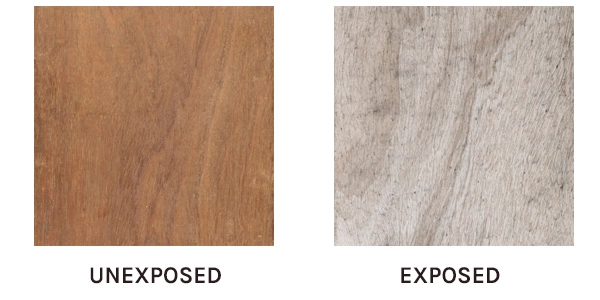
*Ipe exposure test demonstrates results of internal testing whereby the Ipe wood sample was placed on a rooftop and left exposed to the elements continuously for approximately 11 months.
Just as troublesome as UV exposure fading your deck boards? The aforementioned culprit: Moisture. See how a control sample of cedar — a common choice in the world of traditional lumber — fared when in regular contact with moisture for a month.
Cedar Wood Moisture Contact Test*
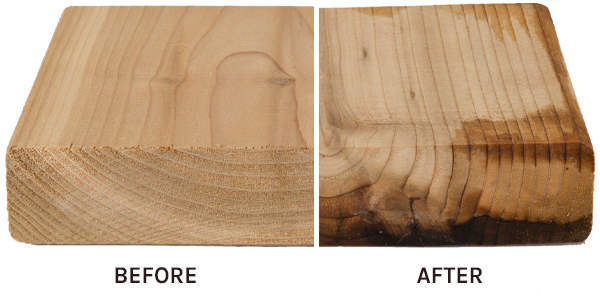
*Comparison of cedar wood decking material before and after a 30-day moisture contact test.
TimberTech Decking vs Deck Damage
TimberTech offers something better than wood: engineered alternative decking.
Our portfolio features capped composite and capped PVC lines. Both feature high-performance inorganic capping to protect against invasion from mold, moisture, and mildew — and to help lock in the realistic wood look you love.
Unrivaled TimberTech Advanced PVC
Our capped PVC boards in the TimberTech Advanced PVC line feature a 100% polymer cap and core — which means absolutely no wood — and is unrivaled in the decking industry. TimberTech Advanced PVC decking:
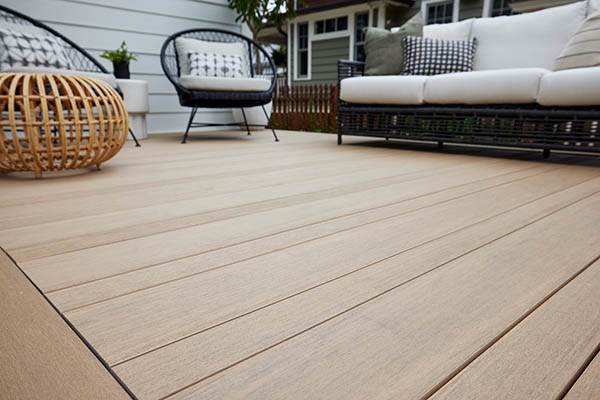
✓ Boasts superior moisture resistance: Thanks to advanced polymer technology and a composition free of organic materials.
✓ Protects against mold and mildew growth: Along with fading, staining, weathering, and rot.
✓ Offers the beauty of wood with none of the drawbacks: Offers all the color blending, grain variation, and complex beauty of traditional wood without the susceptibility to deterioration of the aesthetics.
See for Yourself
Exposure Test
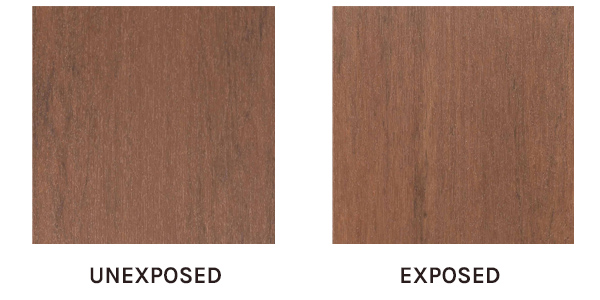
Comparison of TimberTech Advanced PVC decking material before and after placement on top of a wet sponge for 34 months. The 1.5”-high sponges were placed in a water tank where the water level was maintained at a height of 1”.
Moisture Contact Test
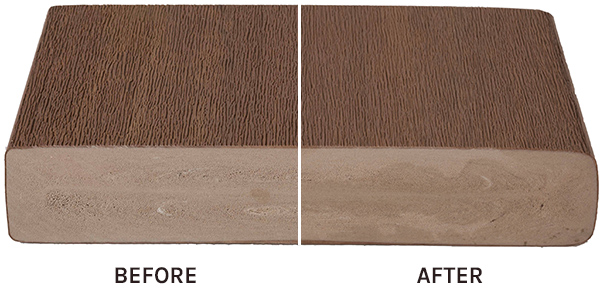
Comparison of TimberTech Advanced PVC decking material before and after placement on top of a wet sponge for 34 months. The 1.5”-high sponges were placed in a water tank where the water level was maintained at a height of 1”.
Premium TimberTech Composite
The four-sided capped composite boards in our TimberTech Composite line feature cores made of a blend of recycled wood flour and post-consumer plastics. They are then finished with a 4-sided protective cap with no wood for optimal protection. TimberTech Composite decking:
✓ Boasts premium moisture resistance: Thanks to 4-sided capping that encapsulates the board, including through the grooves.
✓ Protects against mold and mildew growth: Thanks to Mold Guard® Technology in the cap.
✓ Offers the beauty of wood without the durability issues: No wood in the cap means no ready material for rot-causing agents.
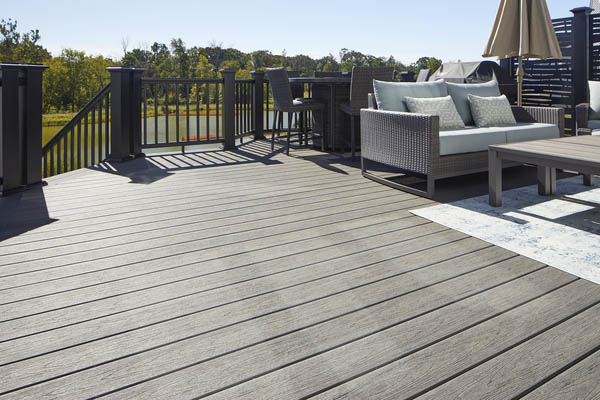
See for Yourself
Exposure Test
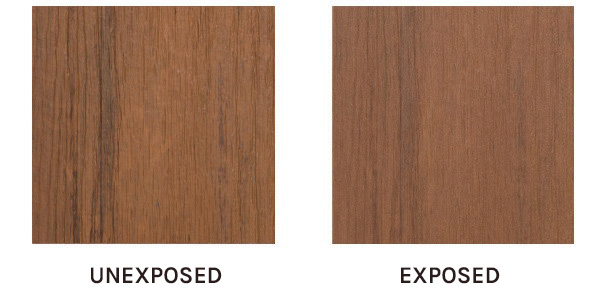
TimberTech Composite decking control on the left and test sample on the right after third-party UV exposure test. The lab test was conducted per ASTM D2244 and ASTMG154 standard on material purchased from consumer channels. Samples tested in weatherometer chamber for a total of 2,150 hours; subjected to cycles of 8 hours of UV radiation followed by 4 hours of darkness to ASTM specs.
Moisture Contact Test
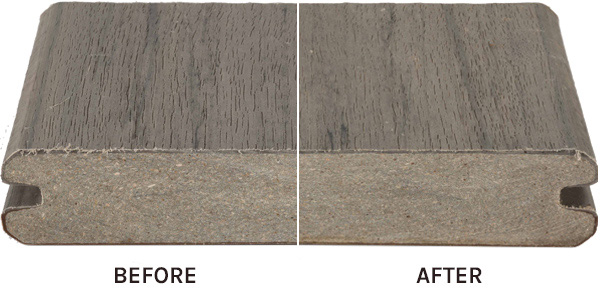
Comparison of TimberTech Composite decking material before and after placement on top of a wet sponge for 34 months. The 1.5″-high sponges were placed in a water tank where the water level was maintained at a height of 1″.
The Takeaway: TimberTech Wins Over Wood
The technology doesn’t lie: When it comes to protecting against many of the major causes of deck damage, TimberTech decking far outperforms traditional lumber.
Composite Decking* vs Wood
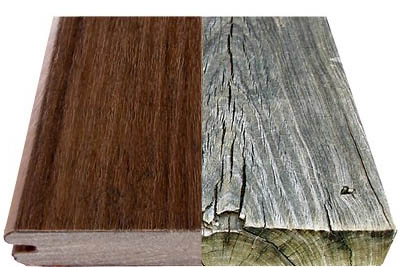
Composite Decking
✓ Mold- and mildew-resistant thanks to fully engineered capping that resists moisture.
✓ Resistant to fading, staining, and warping, thanks to all-weather decking material.
✓ Splinter-resistant for a safe surface.
✓ Potential lifespans of approximately 25 to 50+ years.
✓ Protected with 25-Year, 30-Year, and Lifetime Limited Product Warranties.
Wood
X Highly vulnerable to mold, mildew, and rot, due to organic material make up. This can affect the structural integrity of your deck.
X Color will fade due to sun and weather exposure.
X Boards will warp, crack, and splinter due to moisture penetration and evaporation, along with the effects of UV light.
X Average lifespan of approximately 10 to 15 years.
X No or very limited structural warranties.
*Refers to both capped composite decking, like our TimberTech Composite lines, and capped polymer decking, our TimberTech Advanced PVC line.
Whether you opt for TimberTech capped PVC or capped composite boards, you can expect an enduringly beautiful deck that protects against deck damage.
Warranties That Protect Your Deck
Pressure-treated wood decks, even when properly maintained, only tend to have 15-year lifespans — with no or very limited warranties and/or guarantees to back that up.
By contrast, we’re so confident in our capped composite and capped PVC deck boards, we’ve backed them up with competitive warranties — including several which last more than twice as long as those for wood.
We believe a deck should stand the test of time. And we back that up with unprecedented warranties. Of course, when you build the best products, backing them up is easy.
*TimberTech Prime+, Prime, and Premier Collections are covered by a 25-Year Limited Product Warranty and a 25-Year Fade & Stain Limited Warranty.
PROTECT YOUR SUBSTRUCTURE WITH JOIST TAPE
Find out how TimberTech PRO-Tac Flashing and Joist Tape can protect your joists and ledger board from moisture damage. Learn more about deck joist flashing tape.
Experience the TimberTech Advantage
Problems such as discoloration, mold, cracking, and rot are all unsightly signs of deck damage that will only get worse if they’re not addressed. If you’re looking for an outdoor space that is resistant to deck damage and rich in beauty, our capped composite and capped polymer decking provides the durability you want. Order free samples today to see the difference our decking can offer your outdoor space.

